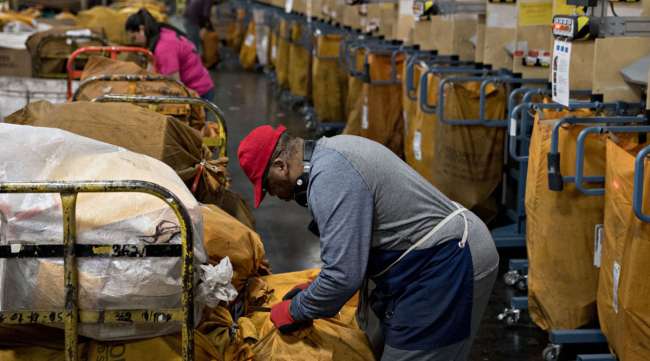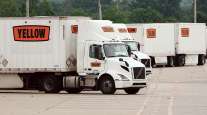The Patriot-News (Harrisburg, Pa.)
Risk Remains Low for Coronavirus Transmission on Packages

[Stay on top of transportation news: Get TTNews in your inbox.]
As social distancing and self-quarantining to prevent the spread of the coronavirus continue, shopping becomes more complicated — and potentially riskier. Most retailers are closed, but there remains a chance to spread the disease from person to person through interaction at stores.
Even before the pandemic began, shopping online was extremely popular. And now, even more people are turning to shipping items through the United States Postal Service as well as companies such as Amazon.com and UPS Inc., rather than going out to buy things they need.
But concerns of spreading infection via the mail or private shipping still remain. How high is the risk of catching the coronavirus through packages or other shipped items?
According to the evidence so far, the risk is not terribly high. The Centers for Disease Control and Prevention has stated on its website that at the moment, “there is no evidence to support transmission of COVID-19 associated with imported goods, and there have not been any cases of COVID-19 in the United States associated with imported goods,” so the concern for anything shipped from overseas is low thus far.
But with goods shipped domestically, the CDC website says that the coronavirus can “remain viable for hours to days on surfaces from a variety of materials.”
According to the Coronavirus Resource Center on the Harvard Health Publishing website, a recent study found that the coronavirus can survive up to 24 hours on cardboard — longer than the two to three hours that it can survive on droplets in the air, but significantly less than the two to three days it can survive on plastic or stainless steel.
To that end, experts suggest leaving packages outside for a day, if possible, just to be safe.
As for the people doing the delivery themselves, mail and parcel delivery services have all announced their own updated sanitation and health guidelines in response to the coronavirus.
USPS announced it was instituting the CDC’s guidelines on sanitation strategies, and shared that the World Health Organization has similarly determined there is a low risk of contracting the disease from a package that has been shipped.
Similar statements can be found on the websites of Amazon, UPS and FedEx, with all three companies stressing the increased cleaning protocols at their facilities and that employees are to stay home if they are feeling any symptoms.
However, confirmed cases of COVID-19 infection have been reported from employees of at least eight Amazon warehouses, according to NPR.
An open statement from Amazon employees published March 17 is demanding more consideration be taken by the company for its workforce, which is currently looking to fill an additional 100,000 positions to keep up with demand. The petition also states that employees are “concerned about the company’s current lack of protective measures.”
Since then, Amazon CEO Jeff Bezos has announced several new policies for Amazon employees, including paid sick leave for those diagnosed or quarantined with COVID-19 and a relief fund for contractors and drivers.
Want more news? Listen to today's daily briefing:
Distributed by Tribune Content Agency, LLC




